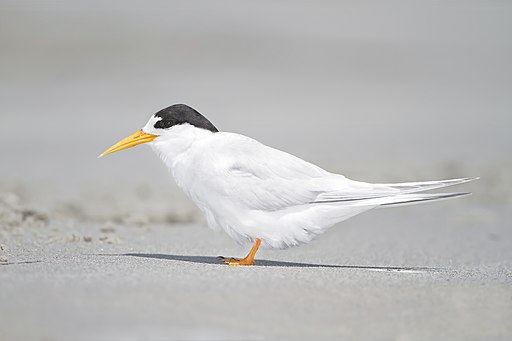Superregnum: Eukaryota
Cladus: Unikonta
Cladus: Opisthokonta
Cladus: Holozoa
Regnum: Animalia
Subregnum: Eumetazoa
Cladus: Bilateria
Cladus: Nephrozoa
Superphylum: Deuterostomia
Phylum: Chordata
Subphylum: Vertebrata
Infraphylum: Gnathostomata
Megaclassis: Osteichthyes
Cladus: Sarcopterygii
Cladus: Rhipidistia
Cladus: Tetrapodomorpha
Cladus: Eotetrapodiformes
Cladus: Elpistostegalia
Superclassis: Tetrapoda
Cladus: Reptiliomorpha
Cladus: Amniota
Classis: Reptilia
Cladus: Eureptilia
Cladus: Romeriida
Subclassis: Diapsida
Cladus: Sauria
Infraclassis: Archosauromorpha
Cladus: Crurotarsi
Divisio: Archosauria
Cladus: Avemetatarsalia
Cladus: Ornithodira
Subtaxon: Dinosauromorpha
Cladus: Dinosauriformes
Cladus: Dracohors
Cladus: Dinosauria
Ordo: Saurischia
Cladus: Eusaurischia
Subordo: Theropoda
Cladus: Neotheropoda
Cladus: Averostra
Cladus: Tetanurae
Cladus: Avetheropoda
Cladus: Coelurosauria
Cladus: Tyrannoraptora
Cladus: Maniraptoromorpha
Cladus: Maniraptoriformes
Cladus: Maniraptora
Cladus: Pennaraptora
Cladus: Paraves
Cladus: Eumaniraptora
Cladus: Avialae
Infraclassis: Aves
Cladus: Euavialae
Cladus: Avebrevicauda
Cladus: Pygostylia
Cladus: Ornithothoraces
Cladus: Ornithuromorpha
Cladus: Carinatae
Parvclassis: Neornithes
Cohors: Neognathae
Cladus: Neoaves
Ordo: Charadriiformes
Subordo: Lari
Familia: Laridae
Subfamilia: Sterninae
Genus: Sternula
Species: Sternula nereis
Subspecies: S. n. davisae – S. n. exsul – S. n. nereis
Name
Sternula nereis (Gould, 1843)
Synonyms
Sterna nereis
References
Proceedings of the Zoological Society of London 1842 (10): 139–140
IUCN: Sterna nereis Gould, 1843 (Least Concern)
Vernacular names
čeština: Rybák australský
English: Fairy Tern
español: Charrancito Australiano
français: Sterne néréis
日本語: ヒメアジサシ
The fairy tern (Sternula nereis) is a small tern which is native to the southwestern Pacific. It is listed as "Vulnerable" by the IUCN and the New Zealand subspecies is "Critically Endangered".
There are three subspecies:
Australian fairy tern, Sternula nereis nereis (Gould, 1843) – breeds in Australia
New Caledonian fairy tern, Sternula nereis exsul (Mathews, 1912) – breeds in New Caledonia
New Zealand fairy tern, Sternula nereis davisae (Mathews & Iredale, 1913) – breeds in northern New Zealand
Description
The fairy tern is a small tern with a white body and light bluish-grey wings.A small black patch extends no further than the eye and not as far as the bill. In the breeding plumage both the beak and the legs are yellowish-orange. During the rest of the year the black crown is lost, being mostly replaced by white feathers, and the beak becomes black at the tip and the base. The sexes look alike and the plumage of immature birds is similar to the non-breeding plumage. The total length of the fairy tern is about 25 cm (10 in).[2]
Behaviour
The fairy tern mainly feeds on fish which it catches by hovering over the sea before plunging beak first into the water to grab its prey. It seldom goes far out to sea but is often to be seen where predatory fish are feeding on shoals of small fish. It also consumes crustaceans, molluscs and some plant material.[2]
Breeding takes place in the spring in colonies on sheltered beaches on the mainland or on offshore islands. The nest is just above high-water mark and is a scrape in the sand. One or two eggs are laid and both parents share the incubation and care of the chicks and have occasionally been seen providing post-fledging parental care.[3]
Status
Formerly classified as a Species of Least Concern by the IUCN,[3] recent research shows that its numbers have been decreasing rapidly throughout its range; the New Zealand subspecies has been on the brink of extinction for decades. The fairy tern was consequently uplisted to Vulnerable status in 2008.[3] The New Zealand fairy tern has numerous breeding areas, largely incorporating the upper-north region of the North Island. In 2011, there were only about 42 known individuals. With a breeding program in place by the New Zealand Department of Conservation, the population was estimated in 2020 at 40.[4]
References
BirdLife International (2018). "Sternula nereis". IUCN Red List of Threatened Species. 2018: e.T22694691A132568135. doi:10.2305/IUCN.UK.2018-2.RLTS.T22694691A132568135.en. Retrieved 19 November 2021.
"Fairy Tern: Sterna nereis". Tasmania Parks and Wildlife Service. Retrieved 2013-12-17.
"Species factsheet: Sterna nereis". BirdLife International. Retrieved 2013-12-17.
"Rarest bird in the country gets a helping hand". 23 August 2018.
Douglas Adams & Mark Carwardine, Last Chance to See (Ballantine Books, 1992, ISBN 0-345-37198-4)
Retrieved from "http://en.wikipedia.org/"
All text is available under the terms of the GNU Free Documentation License


